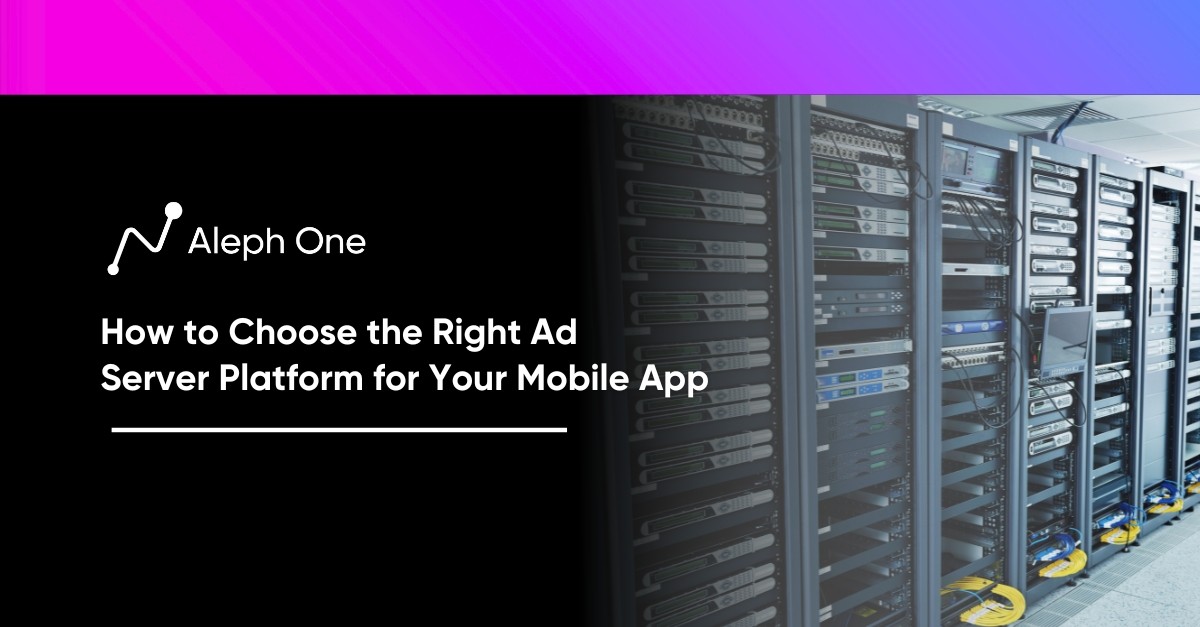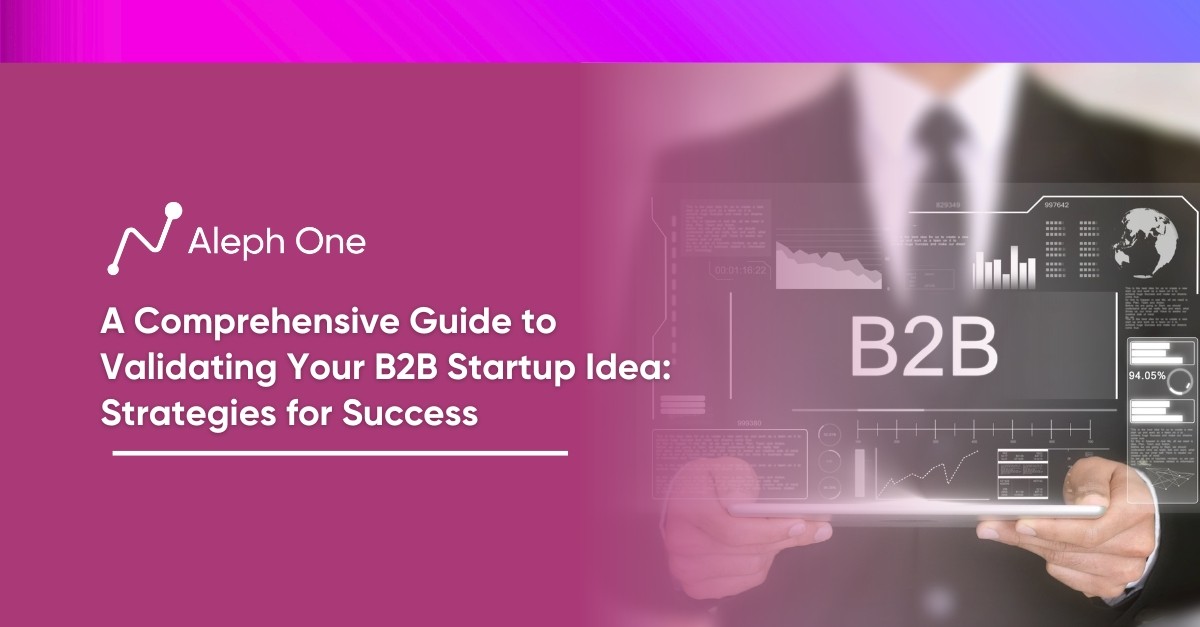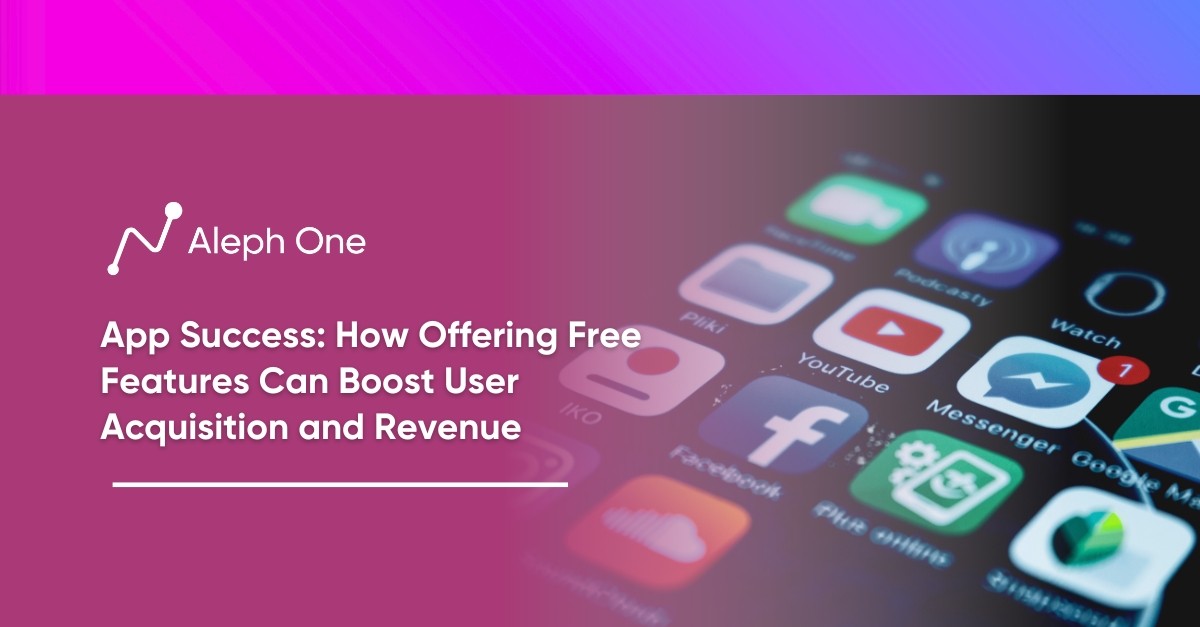Let’s work together to build something amazing. Share your project details and our team will reply to figure out the next steps to your success.

The rapidly evolving world of digital advertising demands strategic decision-making, particularly when choosing the right ad server platform for your mobile app. This comprehensive guide delves into the crucial considerations and top tips for making an informed choice. We begin by tracing the trajectory of ad servers from their rudimentary origins of managing basic banner ads to their current role as sophisticated platforms central to programmatic advertising and machine learning. Exploring the perennial debate of first-party versus third-party ad servers, we outline the pros and cons of each, acknowledging the balance between control and complexity. Transitioning seamlessly into essential features, we highlight the key functionalities your chosen ad server should possess, from ad trafficking and geo-targeting to frequency capping and advanced analytics.

The Ad Server Landscape: A Quick History
Ad servers have been around since the mid-1990s, originally developed to help publishers manage and serve basic banner ads on websites. As online advertising grew into a multi-billion dollar industry, ad servers became more sophisticated. They started handling the trafficking and optimization of multiple ad formats across websites and mobile apps.
Publishers Outsource Management and Delivery of Ads
Most large publishers built their proprietary ad servers in the early days. But as ad tech became more complex, many turned to third-party ad servers and ad networks to access more advanced features and ad inventory. DoubleClick (now Google Ad Manager) launched in 1996 and quickly became the dominant third-party ad server. It allowed publishers to outsource the management and delivery of ads so they could focus on content and audience growth.
Real-time Bidding
The rise of real-time bidding (RTB) and programmatic advertising in the 2010s spurred further innovation in the ad server space. Ad servers developed real-time integrations with demand-side platforms (DSPs) and ad exchanges to enable publishers to tap into programmatic ad inventory. They also started offering more sophisticated targeting, optimization, and reporting features powered by machine learning and big data.
Google Ad Manager, AppNexus, and Rubicon Project
Today, the ad server landscape is split between a few large third-party platforms like Google Ad Manager, AppNexus, and Rubicon Project, and some publishers maintaining their ad servers. For most publishers, third-party ad servers offer greater benefits due to their advanced functionality, expansive ad inventory, and hands-free management. However, some very large publishers still see value in controlling their ad tech stack and data.
Ad servers have evolved from simple ad trafficking tools into highly sophisticated platforms that leverage programmatic advertising and machine learning. They play a crucial role in helping publishers maximize their ad revenue in today’s digital media ecosystem. For mobile app publishers, choosing the right ad server is one of the most important technology decisions.
First or Third Party: Weighing the Pros and Cons
As a publisher, one of the first decisions you must make is using a first-party or third-party ad server. A first-party ad server is one that you build and maintain in-house. An independent ad tech company provides a third-party ad server. For most publishers, a third-party ad server is the better option due to the complexity of building and optimizing an ad server.
Third-party Ad Servers Offer Several Advantages
They have robust ad-serving platforms that provide various features like granular targeting, frequency capping, reporting, and optimization algorithms. They also have connections with many demand partners and ad exchanges that can maximize your ad revenue. Using a third-party ad server frees up your engineering resources to focus on your core business.
Downsides to Third-party Ad Servers
You have less control and ownership over your data. The ad server and demand partners will have access to your audience data to facilitate ad targeting and personalization. They typically charge fees that can eat into your ad revenue. The fees are often a percentage of advertisers’ spending, so your costs scale with revenue.
Control and Ownership of Your Data
With a first-party ad server, you have complete control and ownership of your data. You can customize the platform to your needs and avoid paying third-party fees. However, building and optimizing an ad server requires significant technical resources. It can be difficult for publishers to establish direct relationships and integrations with many ad networks and exchanges. First-party ad servers may need some of the advanced features and machine learning algorithms offered by third-party providers.
For most publishers, the benefits of using a third-party ad server outweigh the downsides. They provide sophisticated ad-serving platforms, access to demand, and optimization expertise that would require more work to build in-house. However, if control of data and avoidance of fees are top priorities, building a custom first-party ad server could make sense for some publishers with sufficient technical resources. The right choice depends on your priorities, resources, and level of in-house expertise.
Must-Have Features: What Your Ad Server Needs
An ad server platform must have certain key features to manage your mobile app advertising effectively. Some of the must-haves include:
Ad Trafficking
This allows you to upload and manage your ad campaigns, including assigning ads to specific placements and setting schedules. You should look for an ad server that makes it easy to traffic new ads and make changes to existing campaigns.
Geo-targeting
The ability to target ads based on a user’s location is crucial for mobile apps. Choose an ad server with precise geo-targeting options that allow you to target ads at country, region, city, and even zip code level. Some ad servers also offer geo-fencing, which targets users within a certain radius of a location.
Frequency Capping
This feature limits the number of times a user sees the same ad within a given time period. It helps ensure your users are not bombarded with repetitive ads. Look for an ad server that offers flexible frequency capping options, including capping by ad, campaign, placement, or user.
Reporting and Analytics
Comprehensive reporting and analytics tools are essential to gain insights into how your ad campaigns are performing. Look for an ad server that provides reports on key metrics like impressions, clicks, conversions, eCPM, and revenue. Real-time analytics and customizable reports are useful too. Some ad servers also offer advanced analytics powered by machine learning.
Other Innovative Features
Some ad servers provide additional features like machine learning optimization that can automatically optimize ad targeting and bidding to maximize your revenue. Dynamic creative optimization creates multiple ad variations to improve performance. Viewability measurement ensures users see your ads. Support for native ads, video ads, and rich media ads provides more options to engage your audience.
With so many features to consider, it can take time to determine what you need in an ad server. Focus on the essentials for managing and optimizing your mobile ad campaigns, but also look for innovative features that can help boost your revenue and enhance the user experience. The ideal ad server balances robust functionality with ease of use.
The Top Ad Servers of 2020
Some of the leading ad server platforms for mobile apps today include:
Google Ad Manager
Previously known as DoubleClick for Publishers, Google Ad Manager is the dominant ad server in the market with the largest market share. It is a full-featured platform for publishers to manage display, video, and native ads across devices. Key features include real-time bidding, private marketplaces, frequency capping, and advanced reporting. Pricing is based on a percentage of spend.
AppNexus
AppNexus is an independent ad server that empowers publishers to maximize their ad revenue through real-time bidding and a large exchange. It offers sophisticated targeting, forecasting, and optimization tools powered by machine learning. AppNexus charges publishers a flat monthly fee and a percentage of spend. It is best suited for large publishers with high volumes of traffic and inventory.
Rubicon Project
Rubicon Project is a popular third-party ad server and exchange for publishers to connect with hundreds of buyers and demand partners. It provides a full suite of ad-serving features, including header bidding, private marketplaces, and a programmatic direct solution. Pricing consists of a flat monthly fee plus a percentage of spend. Rubicon Project works with publishers of all sizes but may be more cost-effective for mid-sized and large publishers.
SmartyAds
SmartyAds is an enterprise ad server and supply-side platform with strengths in video and native ads. It offers publishers a customizable dashboard, real-time reporting, frequency capping, and an open API for integration with third-party platforms. Pricing is based on a flat monthly fee starting at $500, with additional fees for premium features. SmartyAds is suited for small to mid-sized publishers looking for an affordable but full-featured self-serve ad server.
There are many other options in the market, but these represent some of the top, reputable ad servers based on market share, features, and publisher experience. The right choice for you depends on your needs, technical capabilities, volume of traffic, and budget. Evaluate multiple options to find the best fit for your requirements.
Cost Considerations: How Much Do Ad Servers Charge?
The cost of an ad server platform can vary significantly based on the type of solution, features, and level of service. Pricing models typically include a percentage of advertising spend, a flat monthly rate, or tiered pricing based on volume.
Percentage of Spend
For third-party ad servers that provide a full suite of features for managing ad inventory, a percentage of spend, usually 5-30% of gross advertising revenue, is a common model. The percentage charged depends on factors like ad formats, targeting capabilities, and any value-added services. Some ad servers charge higher percentages, around 20-30%, for more premium ad formats like video and native ads. The benefit of percentage-of-spend pricing is that costs scale with revenue, but the downside is it can be difficult to predict and budget for monthly costs.
Flat Monthly Rate
A flat monthly rate, typically a few hundred to a few thousand dollars per month, is simpler to budget for but may have additional overage charges if you exceed monthly impressions or spend caps. Some ad servers charge flat rates for access to their platform and tools, then take a percentage of spend for any value-added services. This hybrid model provides more predictable base costs but still scales with revenue.
Tiered Pricing
Tiered pricing based on monthly impressions or spending is popular for higher-volume publishers. For example, the rate might be 5% of spend for the first $50,000 in monthly revenue, 3% for $50,000 to $200,000, and 2% for anything above $200,000. Tiered pricing rewards higher-volume publishers with lower percentages. Some ad servers offer custom enterprise pricing for significant media companies and networks.
The best way to determine if an ad server’s pricing model works for your needs is to evaluate your current and projected ad revenue to see how costs might scale over time. Find an option that balances predictable costs with revenue-based scaling to maximize value. And be sure to understand all the details in the pricing structure, including any additional fees for premium features, overages, or support.
Finding the Right Fit: Key Questions to Ask
Once you understand the ad server landscape and the options available, it’s time to evaluate specific platforms to find the best fit for your needs. Here are some of the key questions you should ask:
Features and Functionality
Does the ad server offer all the required features for your monetization and ad management needs? Things to consider include ad formats supported, targeting and optimization capabilities, reporting and analytics tools, frequency capping, etc. For mobile apps, you’ll want an ad server with SDKs to facilitate integration.
Data and Targeting
How much data and targeting power does the platform provide? More data and advanced targeting options like geo-targeting, behavioral targeting, and audience segmentation will allow you to maximize revenue. Some ad servers also offer cross-device targeting.
Control and Transparency
How much control and transparency does the ad server offer over your ad inventory and revenue? With a third-party ad server, you’ll want to ensure you retain ownership and access to your first-party data. You should also have a transparent view of how ads are optimized, targeted, and priced.
Pricing
What pricing model does the ad server use, and how does it fit your budget? Percentage of spend and flat rate models are common. Compare the rates of different platforms and see if they offer discounts based on volume. Some ad servers charge additional fees for premium features and support.
Support
What level of customer service and technical support does the ad server provide? Look for ad servers that provide dedicated account management, training resources, and 24/7 technical support in case of any issues. Support for SDK integration and troubleshooting is also valuable.
Roadmap
How committed is the ad server to continued innovation and improvement? Evaluate their product roadmap to see what new features and updates they have planned. An ad server continuously optimizing their platform and algorithms will best meet your needs now and in the future.
FAQ
Can you elaborate on how the rise of real-time bidding (RTB) and programmatic advertising impacted the evolution of ad servers?
The rise of real-time bidding (RTB) and programmatic advertising brought a major transformation in the ad server landscape. This shift allowed publishers to automate the process of selling their advertising space to the highest bidder, promoting efficiency and ensuring that ads are served to the most relevant audiences. As a result, ad servers evolved to facilitate this process by integrating with various demand-side platforms (DSPs) and ad exchanges. They began offering additional, sophisticated features such as real-time bidding capabilities, detailed audience targeting, and performance optimization using machine learning and big data.
What are some key considerations for a publisher when deciding between a first-party and third-party ad server?
When deciding between a first-party and third-party ad server, a publisher must consider several factors. First and foremost is the technical resource availability, as building and maintaining a first-party ad server can be complex and resource-intensive. Second, the control over data might sway the decision; using a first-party server means retaining full control of the data, whereas third-party servers might have access to audience data. Lastly, the revenue potential offered through access to a wider pool of advertisers and advanced optimization algorithms in third-party servers must be weighed against the cost of using such services.
Based on your experience, what are some of the innovative features that are emerging in ad servers?
Some of the innovative features that are emerging in ad servers revolve around machine learning and advanced analytics, offering publishers deep insights into advertisement performance. Features such as dynamic creative optimization, which can automatically adjust ad creative for better performance, and predictive analytics, which forecast future ad performance based on historical data, are becoming more prevalent. Moreover, support for new ad formats like immersive AR and VR ads, interactive video ads, and programmatic native ads is also gaining popularity. Ad servers that offer these innovative features can provide more value to publishers, helping them engage their audience better and maximize their ad revenue.
Get the latest news and updates from Aleph One in your inbox.



